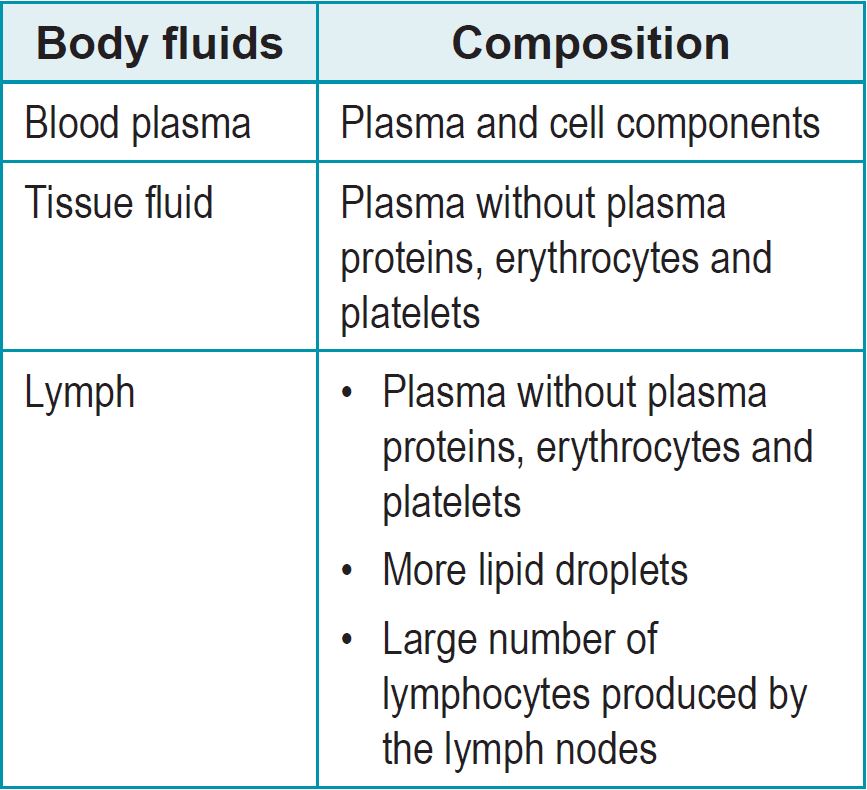Question 1:
Name the two main lymphatic vessels.
Name the two main lymphatic vessels.
Answer:
Right lymphatic duct and thoracic duct
Question 2:
State three main functions of the lymphatic system.
State three main functions of the lymphatic system.
Answer:
The lymphatic system has three main functions:
• The collection of excess tissue fluid to be returned to the bloodstream
• The transport of lipids from the small intestine to the bloodstream
• Body defence: Lymph nodes destroy pathogens and produce lymphocytes
Question 3:
State the differences between the composition of blood plasma, tissue fluid and lymph.
State the differences between the composition of blood plasma, tissue fluid and lymph.
Answer:
Question 4:
After eating fatty food, the number of lipid molecules in the lymph increases by 1%.
Explain why.
After eating fatty food, the number of lipid molecules in the lymph increases by 1%.
Explain why.
Answer:
Fatty acids and glycerol (the digested fat-rich foods) diffuse into the lacteals in the villi of small intestines. These simple molecules then form a part of lymphatic components that are transported to the lymphatic vessel through the lacteal. Therefore, the number of lipid molecules in the lymph increases after a fat-rich meal intake.